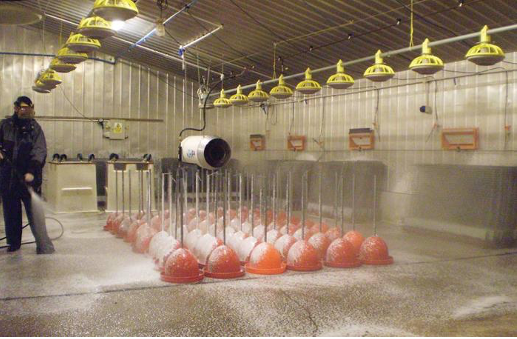
A hatchery is the very earliest stage in chickens’ lives. Any kind of contamination in this environment can be a serious threat to their health and overall production. Hence, proper hygiene, disinfection and permanent monitoring in the hatcheries are of paramount importance.
Periodically, even the best hatcheries will suffer from depressed hatch, higher first week mortality and a general reduction in chick quality. It is often attributed to ‘E coli’, ‘Pseudomonas’ or another microorganism used as a generic term for the condition. Post mortems often second these observations.
The first environment in a chicks life
The real question at hand is, how do we prevent contamination of the hatchery initially, and how can we achieve microbiological control and prevent infection of the day old chick. The adverse impact that the very first environment a chich is born in being unhealthy and disease ridden cannot be ignored. Some of these microorganisms are of course true poultry pathogens: Aspergillus fumigatus, for instance, which will cause extensive lung infection and associated poor growth rate and high mortality in the day old chicks. Others are opportunistic pathogens such as the aforementioned e.coli.
Effectiveness of disinfectant for clean water
Consideration should be given to water treatment coming into the hatchery which can introduce contamination to the facility in the first place. Some methods employed for this task are as follows:
- Chlorine Dioxide dosing
- UV treatment
- Chlorination
Again, thought should be given to a combination of efficiency and corrosive effects of these methods dependant on hatchery structure and compatibility to the chemicals used in the hygiene programme.
There is a school of thought that there should be a shuttle programme for disinfectants, where two different chemical types are rotated alternately over a period of time to prevent bacterial resistance building up within the hatchery environment.
Monitoring microbiological results
The results generated from a monitoring programme allow analysis of the hatchery hygiene programme and its ability to control potential pathogen introduction, and to minimise contamination from specific high risk points in the production system. The programme should highlight seasonal trends such as aerial fungi especially in hatcheries located in rural areas where a seasonal peak of aerial fungal spores can cause sudden and significant health problems in the day old chick.
Having your samples tested at NABL accredited labs adds weightage and reliability to your program and gives you a realistic picture of what steps to take next.
From the knowledge gained through the operation of monitoring programmes, changes in the hygiene programme in the form of chemical types or application methods can be implemented to ensure chicks hatch into a high hygiene environment which is pathogen free.
Get in touch with us – info@purewaterent.net to know more about our offerings in this space!





